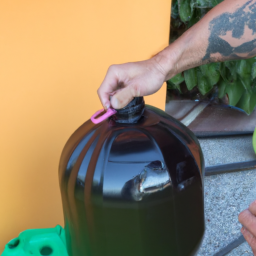How To Fill Paintball Tank At Home
How To Fill A Paintball Tank At Home
Exploring How to Fill a Paintball Tank at Home
Regulations and Safety Concerns
When considering the idea of filling a paintball tank at home, it's important to take into account possible regulations and safety concerns. While paintball tanks are oftentimes filled with compressed air, some states have laws in place regulating the transfer, storage, and filling of paintball tanks. Before attempting to fill a paintball tank at home, it's important to familiarize yourself with any applicable laws or regulations.
It is also paramount to practice safety awareness when filling a paintball tank at home. Since paintball tanks are made with steel, even small amounts of liquid can cause corrosion and structural weakness, leading to possible explosion of the tank. To avoid any safety risks, it's best to fill the paintball tank at an approved hydro-testing facility.
Methods of Filling a Paintball Tank
Now that regulations and safety have been discussed, let's explore the different methods of filling a paintball tank. The two most common ways are using a compressed air tank and using a nitrogen tank. A compressed air tank is the most popular option, as most people can purchase an adapter to fill the paintball tank directly from the air tank.
If you want to use nitrogen, you'll need a nitrogen tank, which is often more difficult to track down. It's important to understand the potential dangers of using nitrogen; breathing in nitrogen presents several health risks, including oxygen deprivation and psychological effects. Additionally, nitrogen has an incredibly high pressure level and requires extremely safe and proper handling.
Filling the Tank with Air or Nitrogen
Filling with a Compressed Air Tank
When filling a paintball tank with a compressed air tank, the first step is to locate the proper fitting on the paintball tank. This is normally found at the top of the tank, and usually consists of an air valve with a square hole. Once this has been identified, you'll need an adaptor to connect the two tanks. Many compressed air tanks will come with an appropriate adapter, but if you don't have one handy, you may need to purchase one.
Next you need to open the valve of the compressed air tank. Make sure that the valve is in the correct position, then open the valve and allow the compressed air to flow through the adapter and into the paintball tank. Be sure to monitor the pressure gauge at this point, as this will let you know when the tank is at its proper pressure level.
When you're finished filling the paintball tank, make sure to securely close the valve and store the tanks in a safe location.
Filling with a Nitrogen Tank
Filling a paintball tank with nitrogen is a more complicated process, and requires more safety precautions. Before getting started, you'll need to make sure you have the right connections and understand the safety risk involved in working with nitrogen. Once you have the right equipment, you'll need to use a regulator with a nitrogen tank to safely fill the paintball tank.
Begin by attaching the regulator to the nitrogen tank. Make sure that the valve is in the proper position, then open the valve and let the nitrogen flow through the regulator and into the paintball tank. Monitor the pressure gauge to make sure that the tank doesn't get overfilled. Once the pressure gauge is at the desired pressure level, turn off the valve and detach the regulator.
Before storing the tanks, make sure to properly close the valve on the nitrogen tank so that the nitrogen doesn't escape.
Insights
Filling a paintball tank at home has its pros and cons. While it's a convenient and cost-effective option, it's important to understand all of the regulations and safety concerns in order to stay compliant and safe. Additionally, if you're planning on using nitrogen, make sure that you take the necessary safety precautions and have the proper connections and equipment.

Previous Page
Next Page
